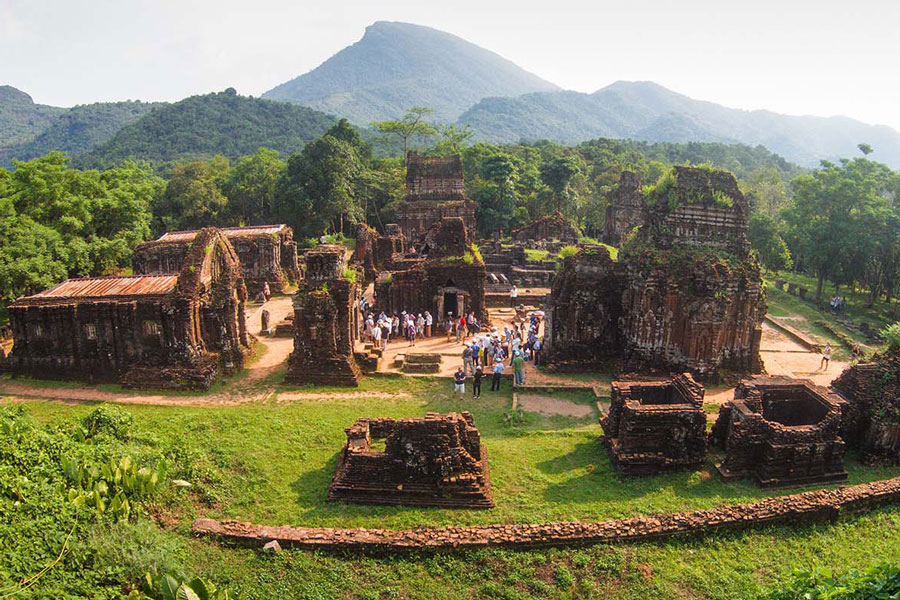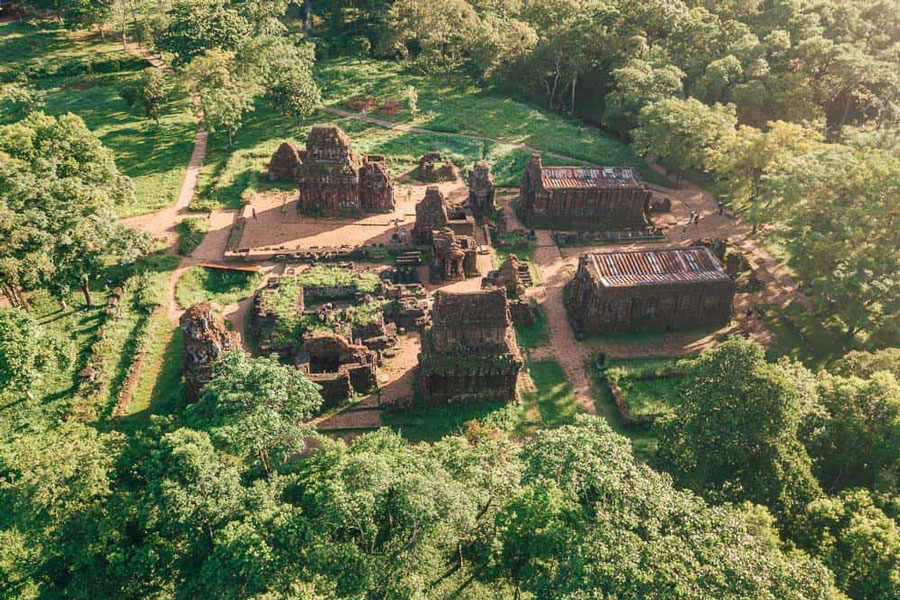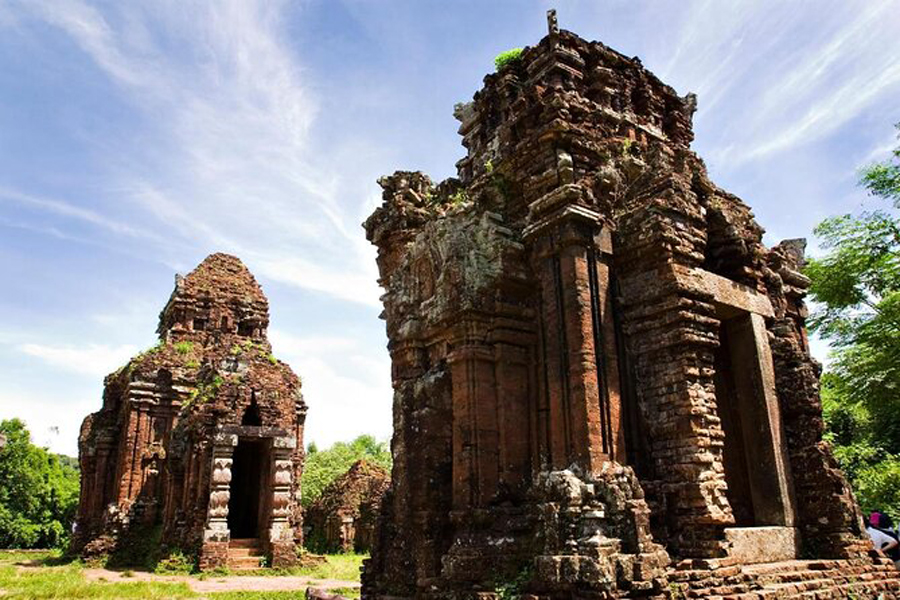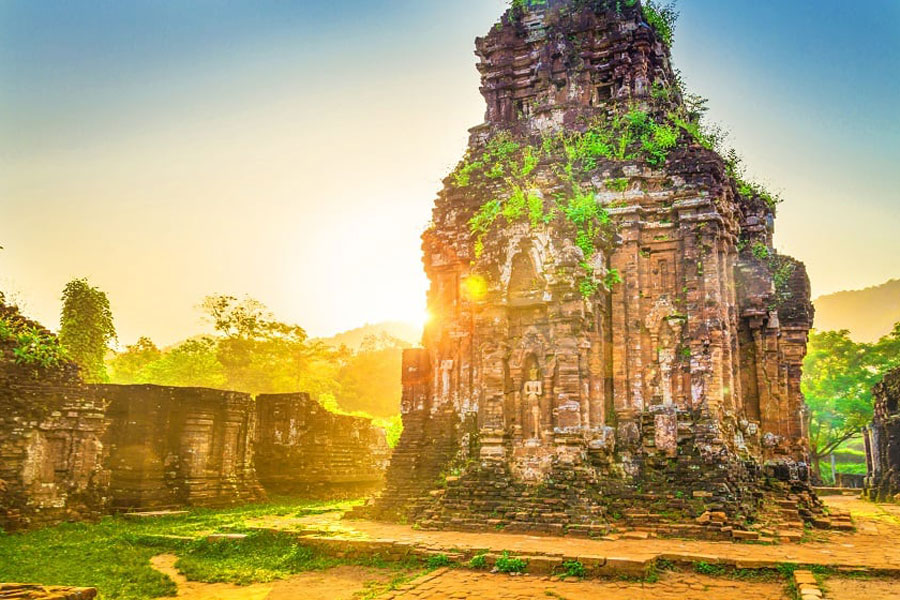My Son Sanctuary

Discover the enchanting historical legacy of My Son Sanctuary, an undisputed jewel in the heart of Quang Nam Province, Vietnam. Designated as a UNESCO World Heritage Site, this archaeological marvel unravels the captivating tale of the Champa Kingdom, spanning from the 4th to the 14th century. As you traverse this sacred ground, be transported back in time among the remnants of ancient brick towers and sanctuaries, each a testament to the spiritual and political significance of the Champa civilization.

Dedicated primarily to the veneration of the Hindu deity Shiva, My Son Sanctuary showcases the architectural brilliance and artistic finesse that flourished despite the challenges of its historical context, including the scars inflicted during the Vietnam War. The intricately carved reliefs adorning the structures narrate stories of devotion, cultural richness, and the Champa people's profound connection to their spiritual beliefs.
The history of My Son Sanctuary is a riveting narrative that spans over a millennium, telling the tale of the Champa Kingdom's cultural and religious prominence. Established in the 4th century by King Bhadravarman I, My Son emerged as a significant Hindu temple complex dedicated to the veneration of deities, primarily Shiva. Over the subsequent centuries, particularly during the Champa Kingdom's zenith from the 7th to the 10th centuries, the sanctuary evolved into a flourishing center for religious and cultural activities. The red brick towers, characterized by their intricate carvings and artistic embellishments, bear witness to the Champa people's mastery of architectural styles, blending indigenous Cham elements with influences from Indian Hindu traditions.
My Son Sanctuary stood as the spiritual heart of the Champa Kingdom, hosting elaborate ceremonies, rituals, and worship practices. Its temples were not only architectural marvels but also profound symbols of the Champa people's devotion to their religious beliefs. However, the decline of the Champa Kingdom in the 14th century, coupled with external pressures and political instability, led to the gradual abandonment of My Son.

In the 19th century, French scholars and archaeologists rediscovered the site, recognizing its historical and cultural significance. Yet, the remote location and encroaching jungle posed challenges to its preservation. The 20th century brought new trials as My Son Sanctuary endured the impact of the Vietnam War, with many of its temples suffering damage from bombings, leaving them in a state of ruin.

Despite these challenges, My Son Sanctuary persevered, earning UNESCO World Heritage status in 1999. This recognition marked a crucial milestone in the ongoing efforts to conserve and protect the site. Today, visitors from around the globe can traverse the pathways of this ancient complex, marveling at the intricate details of the red brick structures that have withstood the tests of time and conflict. My Son Sanctuary stands as a testament to the resilience of cultural heritage, inviting us to delve into the annals of history and appreciate the architectural and spiritual legacy left behind by the Champa Kingdom.
See more: Discover the beauty of Saigon - Cambodia & Bangkok
The best time to visit My Son Sanctuary is during the dry season, which typically spans from February to August. This period ensures more comfortable weather and reduces the likelihood of rain, allowing visitors to explore the site without the interruption of heavy downpours. The peak tourist season coincides with this dry period, particularly from February to April, so visiting during these months can provide a balance between favorable weather conditions and fewer crowds.
It's important to note that Vietnam experiences a tropical climate, and temperatures can be quite high, especially from May to August. Therefore, if you prefer milder temperatures, visiting during the shoulder months of February to April or September to early October might be more suitable.

However, keep in mind that weather conditions can vary, and unexpected rain showers may occur even during the dry season. It's advisable to check the weather forecast before planning your visit. Additionally, be aware that the months from September to January constitute the rainy season, with higher chances of rainfall, increased humidity, and the possibility of flooding in some areas.
See more: Paradise for Honeymooners
The journey to My Son Sanctuary presents an enticing adventure. From the charming streets of Hoi An, one can embark on a motorbike or scooter ride, weaving through picturesque landscapes and immersing oneself in the local charm. Alternatively, private car hires or taxis offer a comfortable and convenient option.
The approximately 1 to 1.5-hour journey unfolds a transition from the bustling scenes of Hoi An to the tranquil surroundings enveloping My Son Sanctuary. For those starting in Da Nang, the options include motorbike or scooter rentals, taxis, private car hires, or economical public buses connecting Da Nang and Hoi An.
Organized tours, offering transportation and expert guidance, provide an insightful exploration into the historical and cultural narratives of the ancient temples. Whether navigating the roads independently or joining a guided tour, the pilgrimage to My Son Sanctuary promises an enriching experience, blending adventure with the discovery of Vietnam's profound cultural heritage.
My Son Sanctuary ticket price: 150,000 VND (6.50 USD) – Business hours: 6:30 a.m. to 5:30 p.m.
The My Son Sanctuary is located on a 142-hectare property on the backdrop of Cat Tooth Mountain. When you enter the actual property, a well-marked path takes you all the way around the area and to the different groups. The remaining temples today are categorised and labelled A to H. Group B-C-D make up the largest cluster and are the best-preserved buildings. However, details and decorations in the other groups are much smaller in comparison and are fading due to age.
See more: Essential Vietnam & Cambodia